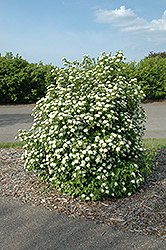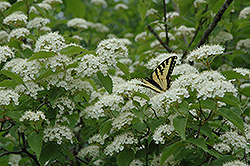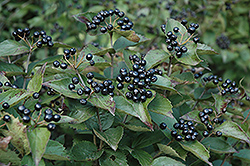It's all about ...
plants

Height: 7 feet
Spread: 8 feet
Sunlight:
![]()
![]()
Hardiness Zone: 2b
Description:
A tough yet beautiful shrub featuring an abundance of pretty white flower clusters in spring followed by glossy black berries that last into fall, red to purple fall color, upright spreading habit; dense habit when grown alone, makes a nice garden accent
Ornamental Features
Downy Arrowwood is blanketed in stunning creamy white flat-top flowers at the ends of the branches in late spring. It has dark green deciduous foliage. The serrated pointy leaves turn an outstanding deep purple in the fall. The black fruits are held in clusters from late summer to mid fall.
Landscape Attributes
Downy Arrowwood is a multi-stemmed deciduous shrub with an upright spreading habit of growth. Its average texture blends into the landscape, but can be balanced by one or two finer or coarser trees or shrubs for an effective composition.
This is a relatively low maintenance shrub, and should only be pruned after flowering to avoid removing any of the current season's flowers. It is a good choice for attracting birds to your yard, but is not particularly attractive to deer who tend to leave it alone in favor of tastier treats. It has no significant negative characteristics.
Downy Arrowwood is recommended for the following landscape applications;
- Mass Planting
- Hedges/Screening
- General Garden Use
- Naturalizing And Woodland Gardens
Planting & Growing
Downy Arrowwood will grow to be about 7 feet tall at maturity, with a spread of 8 feet. It tends to be a little leggy, with a typical clearance of 1 foot from the ground, and is suitable for planting under power lines. It grows at a medium rate, and under ideal conditions can be expected to live for approximately 30 years.
This shrub does best in full sun to partial shade. It is very adaptable to both dry and moist locations, and should do just fine under average home landscape conditions. It is considered to be drought-tolerant, and thus makes an ideal choice for xeriscaping or the moisture-conserving landscape. It is not particular as to soil type or pH. It is highly tolerant of urban pollution and will even thrive in inner city environments. This species is native to parts of North America.


